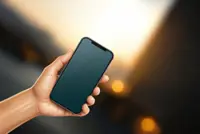In addition to testing models with a USB-C port in recent months, Apple is working on an adapter that would let future iPhones work with accessories designed for the current Lightning connector, sources said. — Charger photo created by rawpixel.com - www.freepik.com
Apple Inc is testing future iPhone models that replace the current Lightning charging port with the more prevalent USB-C connector, according to people with knowledge of the situation, a move that could help the company conform with looming European regulations.
In addition to testing models with a USB-C port in recent months, Apple is working on an adapter that would let future iPhones work with accessories designed for the current Lightning connector, said the people, who asked not to be identified because the matter is private.
Already a subscriber? Log in
Save 30% OFF The Star Digital Access
Cancel anytime. Ad-free. Unlimited access with perks.





